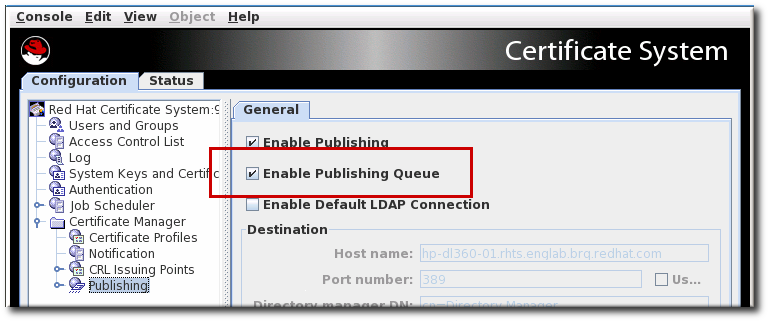Questo contenuto non è disponibile nella lingua selezionata.
9.7. Enabling a Publishing Queue
Part of the enrollment process includes publishing the issued certificate to any directories or files. This, essentially, closes out the initial certificate request. However, publishing a certificate to an external network can significantly slow down the issuance process — which leaves the request open.
To avoid this situation, administrators can enable a publishing queue. The publishing queue separates the publishing operation (which may involve an external LDAP directory) from the request and enrollment operations, which uses a separate request queue. The request queue is updated immediately to show that the enrollment process is complete, while the publishing queue sends the information at the pace of the network traffic.
The publishing queue sets a defined, limited number of threads that publish generated certificates, rather than opening a new thread for each approved certificate.
The publishing queue is disabled by default. It can be enabled in the CA Console, along with enabling publishing.
Note
pkiconsole is being deprecated.
Note
While the publishing queue is disabled by default, the queue is automatically enabled if LDAP publishing is enabled in the Console. Otherwise, the queue can be enabled manually.

Figure 9.1. Enabling the Publishing Queue
Note
Enabling the publishing queue by editing the
CS.cfg file allows administrators to set other options for publishing, like the number of threads to use for publishing operations and the queue page size.
For instruction on how to configure this feature by editing the
CS.cfg file, see the Enabling and Configuring a Publishing Queue section in the Red Hat Certificate System Planning, Installation, and Deployment Guide.